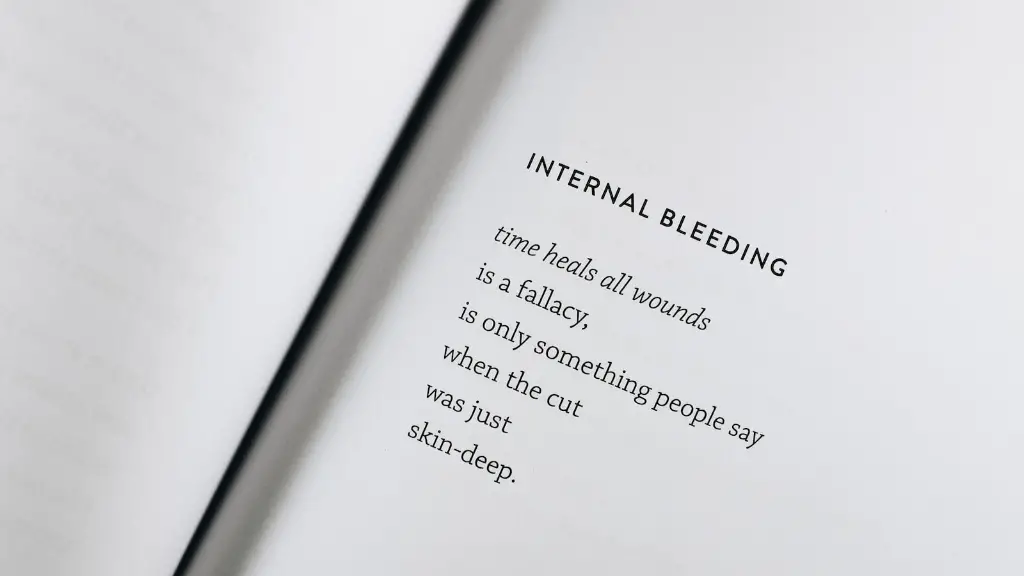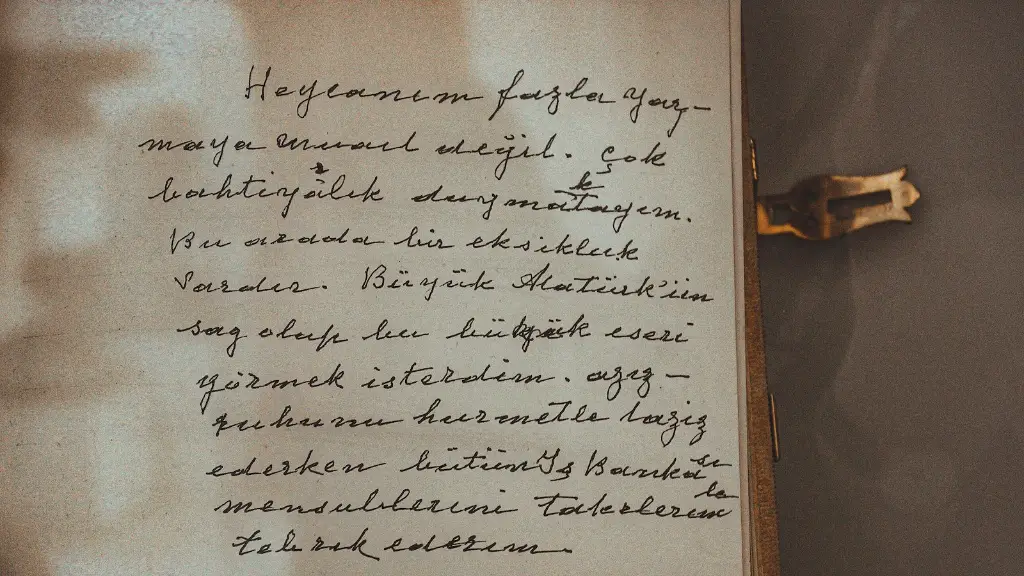Poetry has long been a central form of expression across multiple cultures and nations. Through the use of words and images, poets tell stories, express emotions, and create powerful metaphors that help us see the world in a different light. But one of the key tools ofpoetry is the use of “literal language” – a type of language that conveys exact meanings, making it useful for conveying precise, vivid descriptions.
Literal language is often defined as any kind of language that conveys a fixed, concrete meaning. It usually involves words and phrases that are intended to be taken at face value, without any additional meaning or interpretation. In poetry, literal language is used to create precise descriptions of the poem’s subject matter – for example, a poet may use literal language to describe the color of a flower, or the sound of a river.
The use of literal language in poetry has many benefits. It allows poets to create vivid images in the reader’s mind, and enables them to communicate complex ideas in a succinct and direct way. It can also facilitate the exploration of deeper themes and subjects, as the poet can use literal language to convey the exact thoughts, feelings, and experiences that they are trying to communicate through their work.
Moreover, literal language can be used to create a range of emotional responses in readers. For example, a poet might use precise words to describe a captivating image, which can evoke certain feelings in the reader. This can be especially effective in certain types of poetry such as lyric poetry, where the poet is trying to evoke certain emotions in the reader.
At the same time, literal language can also be a powerful tool for self-expression. By communicating an exact image or emotion, a poet can convey their own feelings and opinions in a direct way. For example, a poet might use literal language to describe the feelings of sorrow and grief, which might have a more powerful impact on the reader than abstract language.
Ultimately, literal language can be a powerful tool for poets, allowing them to craft vivid images and evoke emotion in their readers. While abstract language can be a powerful tool for conveying certain themes and ideas, literal language can be used to express precise emotions and experiences in a direct and powerful way.
Literal Language and Imagery
Literal language is also useful for creating imagery in poetry. By using precise words and phrases, a poet can craft a vivid image of their subject in the reader’s mind. For example, a poet might use literal language to describe the beauty of a sunset, or the chaos of a storm. This can create powerful images in the reader’s mind, and help to create a more engaging and compelling poem.
In addition, the use of literal language can be used to create a sense of atmosphere in a poem. By using precise words to describe the elements of the setting, a poet can create an immersive experience for the reader, drawing them into the poem in a way that would not be possible with abstract language. This can be especially useful in narrative poetry, where the poet is trying to create a vivid and detailed account of a certain event or scene.
Furthermore, the use of literal language can help to clarify certain themes or points in a poem. By providing concrete examples of an idea or sentiment, the poet can ensure that the reader has a clear understanding of the point that they are trying to make. This can be especially useful in themes such as moralizing, where the poet is trying to make an important point about a certain topic.
Overall, the use of literal language in poetry can be a powerful tool for creating vivid imagery and conveying powerful messages. By using precise words and phrases, a poet can create a vivid image in the reader’s mind, elicit a range of emotion, and ensure that their themes and points are conveyed in a clear and direct way.
Literal Language and Rhyme
The use of literal language can also be useful for creating rhyme in poetry. By using words and phrases that share the same pronunciation at the end, a poet can craft a line of poetry that is both musically pleasing and conveys an exact meaning. For example, a poet might use the words “bone” and “stone” to craft a line of poetry that rhymes while maintaining an exact meaning.
Rhyme can be especially effective when used in conjunction with other poetic devices. For example, if a poet pairs a rhyme with a metaphor, it can create a more powerful and vivid image in the reader’s mind. This can be especially effective in lyric poetry, where the poet is trying to evoke emotion in the reader.
At the same time, literal language can also be useful for creating “assonance” – a poetic device in which words share a vowel sound. This can create a pleasing musical effect in a poem, as well as evoking a range of emotions in the reader. For example, a poet might use words with long “e” sounds to evoke a feeling of sadness and sorrow in the reader.
Ultimately, the use of literal language can be a powerful tool for creating rhyme in poetry. By using words that share the same pronunciation or a certain vowel sound, a poet can create a pleasing musical effect in their poem, as well as conveying an exact meaning.
Literal Language and Metaphors
The use of literal language can also be useful for creating metaphors in poetry. A metaphor is a type of figurative language in which one thing is compared to another, usually for the purpose of conveying an idea or sentiment. By using precise words and phrases, a poet can create a vivid metaphor that conveys their exact message. For example, a poet might use literal language to compare a boat to a leaf, conveying the idea of fragility and vulnerability.
In addition, metaphors can be used to evoke a range of emotions in readers. For example, a metaphor that compares a bird to a stone might evoke feelings of sadness and despair, or a metaphor that compares a tree to a river might evoke feelings of peace and serenity. This can help to add depth and emotion to a poem, making it more engaging and immersive.
At the same time, literal language can also be useful for creating “metonymy” – a type of figurative language in which one thing is used to refer to another. For example, a poet might compare a mountain to a voice, referring to the noise of the wind or an avalanche. This can help to create vivid images in the reader’s mind, and can help to convey a specific emotion or feeling.
Ultimately, the use of literal language can be a powerful tool for creating metaphors and other types of figurative language in poetry. By using precise words and phrases, a poet can craft vivid images that evoke a range of emotions in the reader.
Conclusion
Literal language is a powerful tool for poets, allowing them to convey precise emotion and ideas in a vivid and direct way. It can be used to create imagery, evoke emotion, and convey themes and points in a clear and direct way. In addition, literal language can also be used to create rhyme and metaphors, adding a further layer of depth and emotion to a poem. Ultimately, the use of literal language can be an invaluable tool for poets, helping to create a more engaging and powerful poem.




